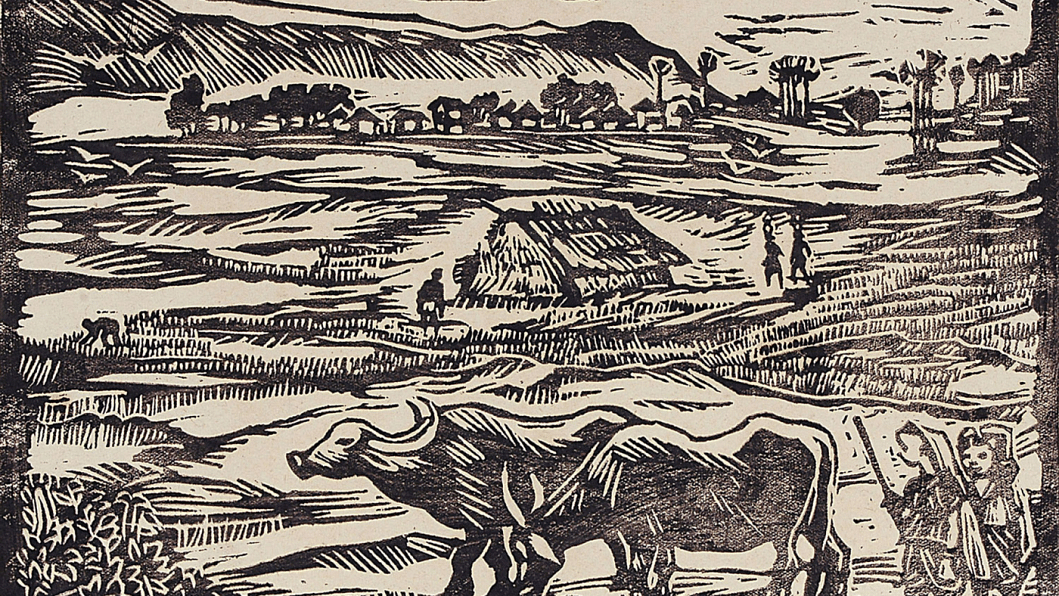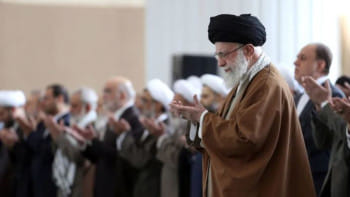How communal politics ruined agrarian society

There are crucial ecological elements in the partition of Bengal in 1947 and an exploration of the pre-history and history of the partition from the vantage point of ecology is more important than ever as we commemorate the 70th anniversary of the event. This takes us to some of the political-economic issues evolving since the early years of colonial rule.
The decline of Bengal's industrial sector in the early colonial period was followed by a phase of 'peasantisation' from around 1840s. The resultant change in the economy and society was reflected in the bulk of internal and external trade and a corresponding increase of flow of cash into Eastern Bengal, higher labour wages, and a remarkable absence of landless people. These social dynamics were reflected in remarkable income generation in rural areas and a growing sense of independence and demand for social justice. The socio-economic transformation took place because of Eastern Bengal's riverine ecology, which created new and fertile lands fit for cultivation of major subsistence and commercial crops of rice and jute, among other items. The architects of a vibrant agrarian society were the active, cultivating peasantry who created vast spaces of production through reclamation of char lands, wastelands, and forest tracts. The majority of the peasantry were Muslims who were joined by a smaller number of relatively lower ranking Hindus.
" But as the history of the last seven decades show, it was ecologically suicidal for both sides of Bengal. Historians now agree that at the centre of the imagination of a 'Sonar Bangla' lay the relatively productive domain of Eastern Bengal. At the prospect of partition, therefore, the Kolkata-centric elite had no other option but try to re-enact the ecological basis of such a 'Sonar Bangla' in the relatively moribund delta of West Bengal.
By the turn of the 20th century, however, Eastern Bengal's economy and social mobility declined as reflected in the lower productivity of agriculture, increase of cultivable wasteland, landlessness, and acute poverty and finally the great Bengal famine of 1943-4. If the 19th-century Bengal Delta reflected a state of considerable upward mobility in the society and economy, why did things deteriorate during the few decades running up to the partition? One answer is that the deltaic ecology, particularly the water regime, deteriorated to a great extent. This was largely caused by extensive railway and protective embankments which crisscrossed the country leading to water-logging, unpredictable flooding due to the bursting of embankments, absence of overflow irrigation, declining spatial spread of silt and the elevation of river-beds. The problems caused by embankments were complicated by the growth of the water hyacinth, which choked different types of water bodies affecting water transport and agricultural fields from the first decade of the century. The combined effect of the presence of the embankments, water hyacinth, and deforestation was reflected in lower agricultural output, growth of cultivable waste lands, and the spread of a number of fatal water-borne diseases. But these ecological problems were further complicated by a new turn in agrarian relations that could be properly understood only from a political-ecological perspective.
By the turn of the 20th century, agricultural lands in the relatively fertile areas of Eastern Bengal began to be transferred to non-cultivating middle class people, historically known as bhadralok, the majority of who were upper-caste Hindus, joined by a small group of Muslims who aspired to attain the ranks of the bhadralok. The entry of the bhadralok into the peasant world proved problematic because they vied for appropriating relatively better agricultural lands amidst worsening ecological conditions. This may be understood by the fact that most acute pre-partition Hindu-Muslim communal violence took place, excepting in Kolkata, in those relatively fertile regions of Eastern Bengal where the rate of land-transfer to the non-agricultural people was highest, i.e. Noakhali, Comilla, Dhaka, Mymensingh, and Pabna.

In other words, the communalisation of the pre-partition politics in Bengal was integrally related to the question of access to ecological resources by the two communities of the Muslims and the Hindus, who had lived in relative peace in the course of the 19th century. The role of the colonial administration in this communalisation of politics was intriguing, to say the least. Since the Partition of Bengal in 1905, the British administration reviewed the issue of Muslim social and economic backwardness sympathetically. The birth of the University of Dhaka was one example of this new policy shift. On the other hand, it actively encouraged the politically dominant Hindu groups to relocate to rural areas and carve out a place in agriculture, which coincided with the call to return to villages by the Swadeshi movement. Since the 1910s, the government offered unprecedented privileges to the Hindu middle-class youths. The government offered the khas mahal lands to the bhadralok in a view to secure the settlement of land 'larger than that of an ordinary cultivator' and 'sufficient to enable them to live in a better style than ordinary cultivators'. Such preferential treatment of the bhadralok was not entirely surprising because as late as 1940, the avowed policy of the government was that of 'enabling persons who have abandoned terrorism to settle down to a life of productive citizenship'.
This dual colonial policy left the existing Muslim majority peasantry facing newly arriving settlers into their productive domain, at a time when ecological bases of productivity were eroding. Eventually by the 1940s, the influx of a new urban middle class under the patronage of the British government meant the transfer of land from the Eastern Bengal peasantry, leading to landlessness, hunger and despair; the majority of these people became the victims of the great Bengal famine of 1943-4, as mentioned earlier. Eminent statistician Prasanta Chandra Mahalanobis worked out that of about 710,000 acres of rice land changing hands during the famine, only about 290,000 had been purchased back in the villages. Roughly 420,000 acres of rice land had thus passed to outsiders, possibly, as Mahalanobis suspected, 'non-cultivating owners' residing in urban areas.
As the productive ecological domain in Eastern Bengal was getting out of their control, the Muslim peasantry welcomed the idea of a separate political space without the existing forms and forces of exploitation. On the other hand, the Hindu elite, whose political epicentre was in Kolkata, felt that in the new post-partition political scenario, they would neither be politically at par in a democratic environment where Muslims were a majority, nor be able to sustain the recently earned hold on agro-ecological bases of Eastern Bengal. Seen from the windows of both the communities, the partition looked inevitable, suggesting at the same time that the communalisation of politics and the partition was essentially a result of artificially constructed iniquity in access to ecological resources and production domains of most of what is today's Bangladesh.
" If the 19th-century Bengal Delta reflected a state of considerable upward mobility in the society and economy, why did things deteriorate during the few decades running up to the partition? One answer is that the deltaic ecology, particularly the water regime, deteriorated to a great extent.
But as the history of the last seven decades show, it was ecologically suicidal for both sides of Bengal. Historians now agree that at the centre of the imagination of a 'Sonar Bangla' lay the relatively productive domain of Eastern Bengal. At the prospect of partition, therefore, the Kolkata-centric elite had no other option but try to re-enact the ecological basis of such a 'Sonar Bangla' in the relatively moribund delta of West Bengal. They were engulfed by the anxiety over losing the ecological heart of the erstwhile 'Sonar Bangla'. This anxiety surfaced in the partition negotiations that fashioned a political boundary that would leave Muslim-majority Murshidabad in India and Hindu-majority Jessore in East Pakistan, in order to secure a hydrologically suitable spot for diverting Ganges water in Farakka. The idea of withdrawing water from the east-bound Ganges for West Bengal first surfaced in the mid-19th century, but late colonial period idea of tampering with the hydrological regime for development projects formed a major part of the modernising programme of the new state. Meghnad Saha, for instance, envisioned a national project on the lines of the Tennessee Valley Authority for Damodar valley in West Bengal and advocated similar multipurpose developments elsewhere along India's major rivers. In this context, Saha imagined 'a national purpose behind all planning'. With the partition of Bengal, a new and clearer form of ecological nationalism was programmed and articulated.
In 1948, Srischandra Nandy noted: 'Our position as regards food production has been dangerously affected due to the major paddy-growing areas being made over to Eastern Bengal. In short, as a result of partition there is now the sad legacy of less food but more to be fed.' For Nandy, the slogan was: 'Produce or perish!', a dilemma that was to be addressed by an improved river system. To him, the scheme of a barrage across the Ganges was perhaps the only effective means of inducing a 'copious supply of fresh up-land water' down through the Bhagirathi, the Hooghly, and other dead and dying spill-channels in central Bengal. To him this was the surest way 'not only to put new life into our moribund countryside, but also to maintain the efficiency of the Port of Calcutta which has assumed a vital significance to us after the partition of Bengal'. Over the years, this anxiety over sustaining West Bengal agriculture and economy culminated in the construction of the Farakka Barrage, which was commissioned in 1975 and continues to inform the West Bengal government's, as reflected in its approaches to the problem of water-sharing with Bangladesh. The bottleneck with the Teesta is an integral part of this long-term history of a fractured deltaic ecology.
In conclusion, the connection between ecology and partition could be summarised in two broader ways. First, when it came to the ecological question, the two-nation theory, on which the partition was claimed to be based, was muted as seen in Punjab and Bengal where the question of partitioning the water bodies took the centre stage. Second, the immediate aftermath of the partition left thousands of people dead and millions homeless and filled with gruesome trauma. The ecological impact of the partition, however, has been more long-lasting, surpassing a generation and affecting even more people till date. Communal politics was the winner of the day in 1947, ecological bases of the wellbeing of the region the loser forever.
Iftekhar Iqbal is a historian at the University of Dhaka and is currently based at the Universiti Brunei Darussalam, Brunei. Details of some of the issues discussed in this article are found in his The Bengal Delta: Ecology, State and Social Change, 1840-1943 (Basingstoke; New York: Palgrave Macmillan, 2010).










Comments